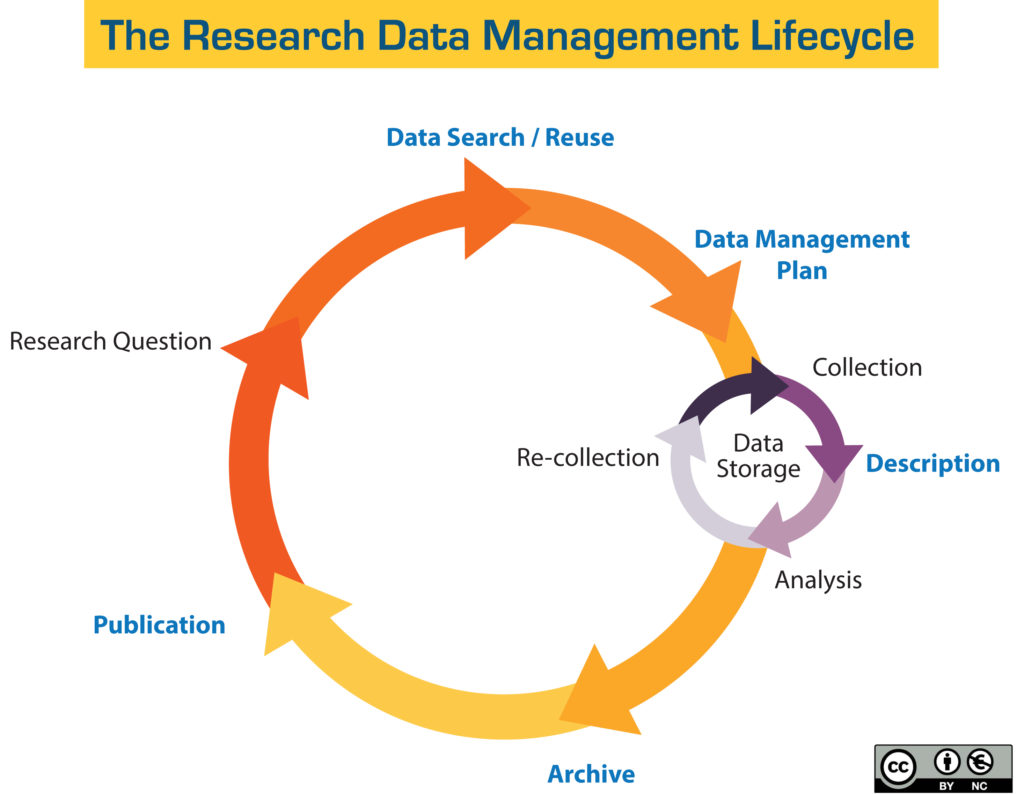
Research Lifecycle Graphic, UC Santa Cruz Library, https://guides.library.ucsc.edu/datamanagement
After years of anticipation and consultations, the Canadian Institutes of Health Research (CIHR), the Natural Sciences and Engineering Research Council of Canada (NSERC) and the Social Sciences and Humanities Research Council of Canada (SSHRC) have released their joint research data management (RDM) policy on March 15, 2021. This policy can be read here.
The RDM policy applies to institutions and researchers which receive or administer funds from the three agencies and will be implemented over the next two years. The agencies will then begin asking for data management plans (DMPs) in funding applications and requiring grant recipients to digitally deposit all research data and code supporting publications which are produced as a result of their funding.
Although there are few strict rules for DMPs, given their presence in funding applications it is likely DMPs will be a factor in grant decisions. Therefore, high quality DMPs will be in demand as soon as this policy enters effect. Anyone interested in writing better DMPs can check out Portage’s DMP Assistant tool, a web tool for writing standardized DMPs, which also includes links to other DMP resources.
The RDM policy does not require that data deposits be shared. While this is an understandable caveat to account for sensitive or personally identifiable information collected as part of research (e.g. medical records or survey information associated with real names), it does leave open the possibility that researchers may simply ignore this guidance. In the absence of shared data, it becomes difficult – if not impossible – to re-use or validate the data underpinning a paper, which can hide academic misconduct or force others to ‘re-invent the wheel’, wasting precious time and resources. The policy implies the agencies may review data deposits and judge their adherence to Principes FAIR, but it is unclear what, if any, sanctions may be applied to researchers who fail to share their sharable data.
In an ideal world, all research data would be sharable – including sensitive information that has been suitably anonymized and/or redacted – and RDM policies would specify that all data outputs are to be shared. However, both anonymization and redaction can be undone in certain circumstances. This policy’s lack of data sharing requirements is understandable in that context – and ensures the researcher has full responsibility for whatever data is shared.
It’s reassuring to know that the agencies want to encourage data management planning and data sharing, even if the policy isn’t as forceful as it could be. Prudent researchers ought to read the policy before it is implemented and start learning how to best meet its requirements. Given the institutional requirements in the policy, you will likely be able to find someone within your institution (e.g., in your library!) who can help you learn – and there are also plenty of online resources, including many from Portage.